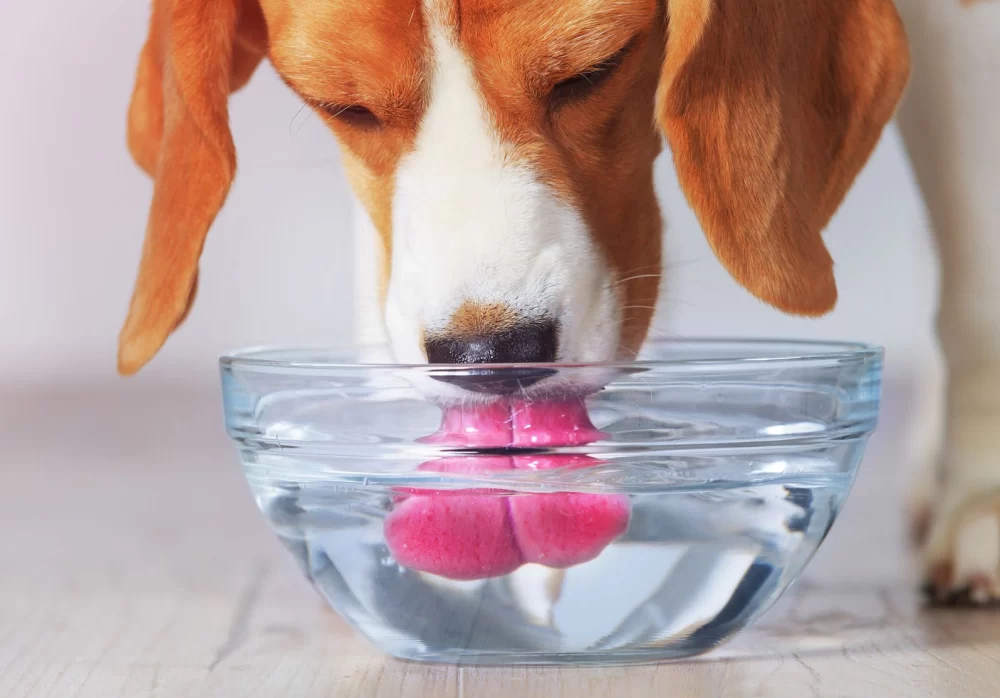How Much Water Should a Dog Drink?
Proper hydration is crucial for your dog’s health and well-being. Just like humans, dogs need to drink water regularly to stay hydrated and maintain healthy bodily functions. However, determining how much water your dog should drink can vary based on several factors. In this article, we’ll guide you through understanding your dog’s water intake needs and how to ensure they are staying hydrated.
General Guidelines for Dog Water Intake
While each dog’s needs may vary, there are general guidelines for how much water a dog should drink. On average, dogs should drink approximately 1 ounce of water per pound of body weight each day. For example, if you have a 20-pound dog, they should drink about 20 ounces (or 2.5 cups) of water daily. However, this is just a starting point, and several factors can influence your dog’s actual water needs.
Factors That Affect a Dog’s Water Intake
Several factors can cause your dog to drink more or less water. It’s important to take these into account when determining how much water your dog needs.
1. Activity Level
Dogs that are more active, such as working dogs, playing dogs, or those that go on long walks, may need more water than less active dogs. Physical activity increases your dog’s water requirements because they lose fluids through sweat and panting. If your dog is highly active, be sure to offer them extra water during and after exercise to help replenish their fluids.
2. Weather and Temperature
Hot weather can make your dog thirstier, just like it does for humans. In warmer temperatures, dogs may drink more water to stay cool and avoid dehydration. If your dog is spending time outdoors on a hot day, be sure to provide plenty of water and encourage them to drink regularly. Similarly, if you live in a dry climate, your dog might need extra water to stay hydrated.
3. Diet
The type of food your dog eats can also affect their water intake. Dogs that eat dry kibble generally need more water because dry food doesn’t contain much moisture. On the other hand, dogs that eat wet food, which contains more water content, may drink less. If you’ve recently switched your dog’s food, take note of their water intake and adjust accordingly.
4. Health Conditions
Certain health conditions can increase your dog’s water intake. For example, dogs with diabetes, kidney disease, or urinary tract infections may drink more water than usual. If you notice that your dog is drinking excessively or seems very thirsty all the time, it’s a good idea to consult your veterinarian to rule out any underlying medical issues.
5. Age
As dogs age, their hydration needs may change. Older dogs may have decreased thirst or may drink more water depending on their overall health. Keep an eye on your senior dog’s drinking habits and ensure they’re staying properly hydrated, especially if they’re dealing with health issues such as arthritis or kidney disease.
How to Tell If Your Dog Is Drinking Enough Water
While you can follow general guidelines, it’s also important to observe your dog’s behavior to ensure they’re drinking enough water. Here are some signs to watch for:
- Normal Urination: If your dog is drinking enough water, they should be urinating regularly. Pay attention to the frequency and consistency of their urine. If your dog is not urinating as frequently or seems to be straining, they may not be drinking enough water.
- Clear, Light-Colored Urine: Healthy urine should be pale yellow or clear. Dark urine may indicate dehydration.
- Dry Nose and Gums: A dog’s nose and gums should be moist. If they seem dry or sticky, it could be a sign of dehydration.
- Skin Elasticity: You can test your dog’s hydration level by gently pinching the skin on the back of their neck or between their shoulder blades. If the skin quickly returns to its normal position, they are well-hydrated. If it remains tented, your dog may be dehydrated.
What Happens if a Dog Doesn’t Drink Enough Water?
Dehydration in dogs can lead to serious health issues. If your dog isn’t drinking enough water, they may become lethargic, have a dry mouth, and show signs of weakness or vomiting. Severe dehydration can cause organ damage and even be life-threatening if not addressed promptly. Be vigilant about your dog’s water intake and take action if you notice any signs of dehydration.
What to Do If Your Dog Is Not Drinking Enough Water
If you notice that your dog is not drinking enough water, here are some steps you can take to encourage hydration:
- Offer Fresh Water Regularly: Make sure your dog always has access to fresh, clean water. Change the water in their bowl at least once or twice a day to encourage them to drink.
- Flavor the Water: If your dog is reluctant to drink, try adding a little bit of low-sodium chicken broth or a pet-safe water flavor enhancer to make the water more enticing.
- Use a Water Fountain: Some dogs are more likely to drink from a water fountain than from a static bowl. A pet water fountain can encourage them to drink more regularly, as the moving water mimics natural streams that are often more appealing to dogs.
- Serve Wet Food: If your dog isn’t drinking enough water, consider adding wet food to their diet. This provides additional moisture and can help keep them hydrated.
- Monitor Their Health: If your dog’s water intake is low and they are showing signs of illness, it’s important to consult your veterinarian to rule out any medical conditions that may be contributing to their lack of thirst.
Conclusion
Every dog has different water intake needs, but ensuring they stay properly hydrated is essential for their health and well-being. By following general guidelines and observing your dog’s behavior, you can ensure they’re drinking the right amount of water each day. If you notice any concerning changes in their drinking habits, be sure to consult your veterinarian to address potential health issues.












